This article is based on the event where Macadamian’s UX Researchers shared their recent employee experience case study.
Happy and engaged employees deliver better customer service and contribute to company growth. That’s why successful companies are investing time and resources into creating a great employee experience (EX) to help people thrive in the workplace. One of such companies is Macadamian.
Today, Simran Singh and Yene Paz, Macadamian’s UX researchers, will share a recent case study on employee journey and employee experience at the company. And now, let’s dive right into the specifics of the case study.
Contents
About the company
Macadamian is a full-service software design and development consulting company specializing in creating digital health and connected medical solutions. Macadamian’s success hinges on a shared desire to make healthcare better for everybody and always putting people at the heart of processes.
The employee journey at Macadamian
Last year, Macadamian was acquired by Emids. Many new people came and many left, all while everyone was still trying to adapt to the new reality of remote.
Before the acquisition, the HR team was able to hear the employee feedback and address it through regular meetings and conversations. But this approach was not scalable enough to meet the needs of the rapidly expanding company. Also, there was a need to get a better understanding of the overall EX throughout different stages, which could be used as a benchmark for future improvements.
Simran and Yene did just that — they created a gold standard for how to capture and document employee experience. But how exactly did they do that?
A step-by-step process
Step 1: Gathering a team
The first step was to gather a team. At Macadamian, the team was an interesting mix of different stakeholders and in-house research expertise, which made perfect sense because this was a typical research project. The only difference was that instead of end users of a product or service, this project focused on employees as the users of the organization per se.
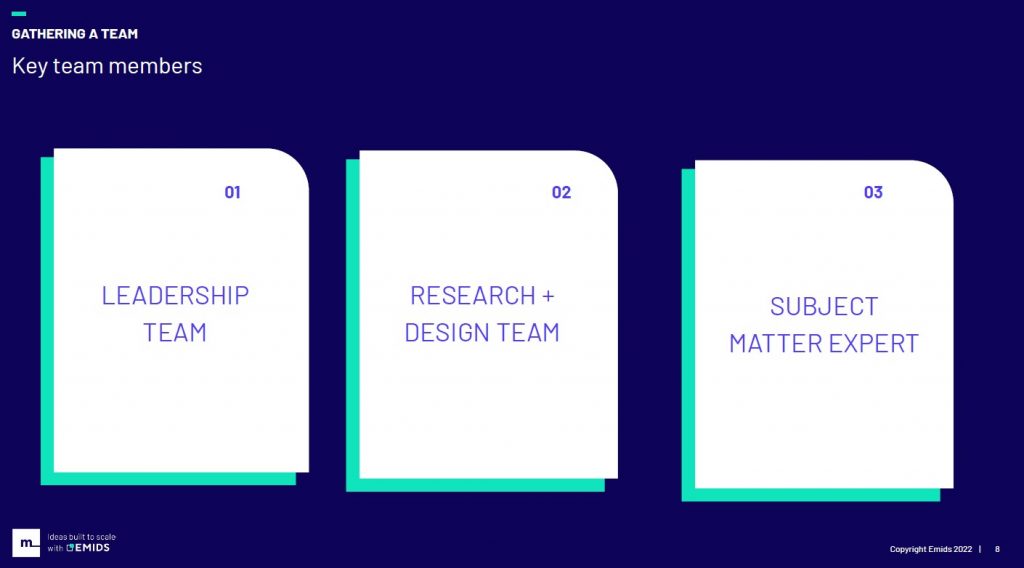
The team met weekly to ensure that everyone was up-to-date on the progress. In terms of key team members, the research team included the leadership, namely the Global HR Lead and the VP of Experience, who supported the initiative because they understood that employees are at the core of the success of any organization. And although there are many challenges around getting the buy-in from the leadership, the importance of having someone from the board willing to advocate for you can’t be stressed enough.
The research team brought the research expertise to capture employees’ feedback, make sense of the findings, and share the insights in an unbiased and actionable format. And the designers helped create interactive journey maps to better visualize the EX.
And last but not least, subject-matter experts (SMEs) are also very valuable for this type of project because you can’t go and talk to every single individual. In this case, the SMEs were the individuals from the HR and the Project Management teams who had much more interactions with employees and therefore could provide support for all research activities.
Step 2: Understanding the employee journey
Once the team was set up, the next step was to align the research goal with the business needs. The research aimed to understand the employee journey in-depth, including the following stages: hiring and onboarding, work tenure, and offboarding.
To achieve that goal, researchers needed to create a journey map. And to do that, they first needed to understand different phases of the journey, as well as what employees feel and what they struggle with throughout the journey. In addition, they needed to identify all the touchpoints and interactions that employees had within different stages of the journey.
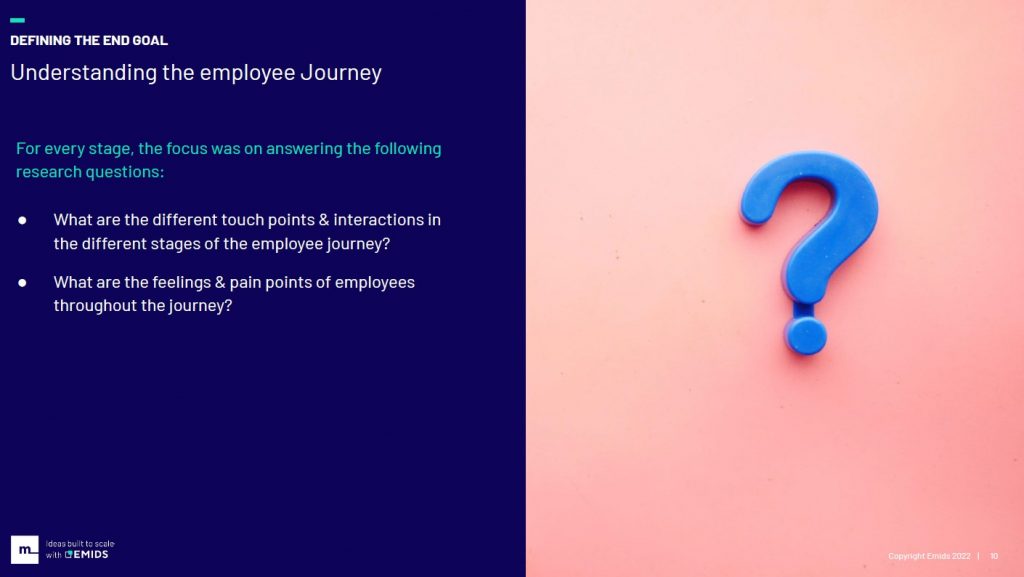
Step 3: Building a research plan
After defining the research goal and the project scope, they prepared a research plan to provide context to the stakeholders involved and keep track of the activities.
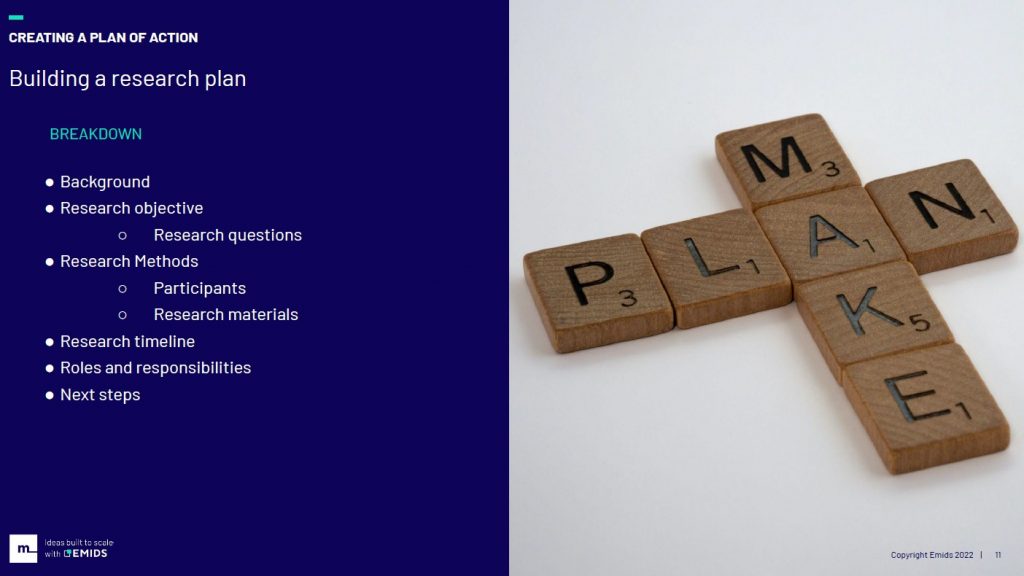
Based on the plan, the UX researchers decided to carry out three sets of user interviews to understand three different stages of the employee journey. The deliverables would be three journey maps with identified stages, activities, touchpoints, thoughts, feelings, and pain points at each stage.
Once the plan was ready, it was time to execute it, and the first step was to capture the data from the interviews. But before going into the interviews, the UX researchers made sure that there were interview guides in place to help them stay on the topic and cover exactly what they needed for the project's goals.
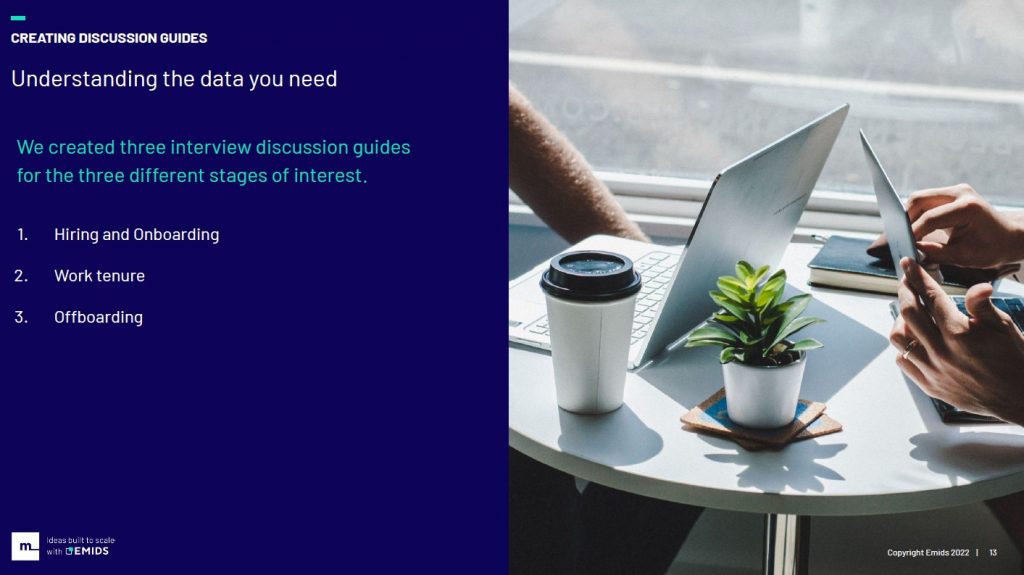
Simran and Yene came up with three discussion guides for three different stages of the employee journey.
- For the hiring and onboarding stage, the focus was to understand the application process and the interview experience in detail, as well as to get an idea of how employees felt about their overall onboarding experience and what their first two weeks at the company looked like.
- For the work tenure stage, the aim was to understand the EX on a more day-to-day basis, like company culture, different rituals, performance management, and so on.
- For the offboarding stage, the intent was to discuss the challenges the employees had been facing at the organization and answer some questions, such as: Why did they decide to leave us? What did the work towards the last few days look like? How did they transfer knowledge?
After finalizing the discussion guides, the UX researchers set remote interviews with employees to gather data. One of the reasons that researchers decided to do interviews instead of any other method was to hear employees’ stories from their authentic, individual perspectives. Another reason was to create an atmosphere of trust and provide a safe space since sharing feedback can be very personal. And it was important to ensure that all information communicated during interviews remained confidential.
In terms of people, the UX researchers spoke to three different groups.
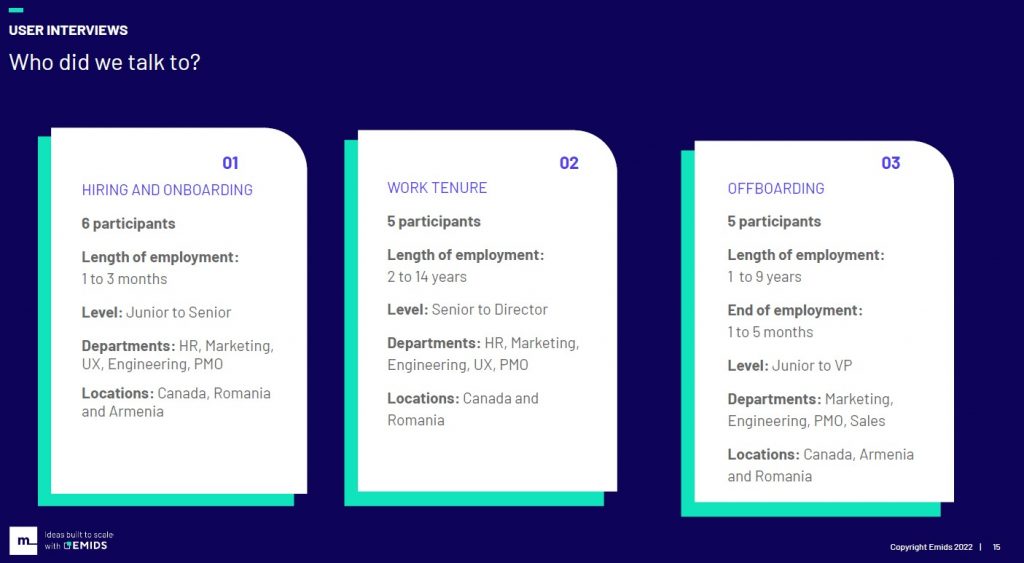
At the hiring and onboarding stage, there were six participants from junior to senior, from different departments, who had been at the company for one to three months. For the work tenure stage, talking to people who had been at the company for a decent amount of time was essential. That’s why the participants had from 2 to 14 years of experience, different levels of seniority, and from different departments and locations.
As for the offboarding stage, the focus was to talk to people who left the company within the last five months to capture the most recent experiences because everything changes, including processes in the company.
Step 4: Making sense of the data
After talking to those individuals, the UX researchers had about 16 hours of interviews. So, it was time to start making sense of the data. Since the end goal was to build a journey map, the researchers analyzed the data and identified what people were doing at different phases of their journeys, what worked well for them, what they thought and felt, their pain points, and their perceived opportunities.
The synthesized data was organized in a journey map format.
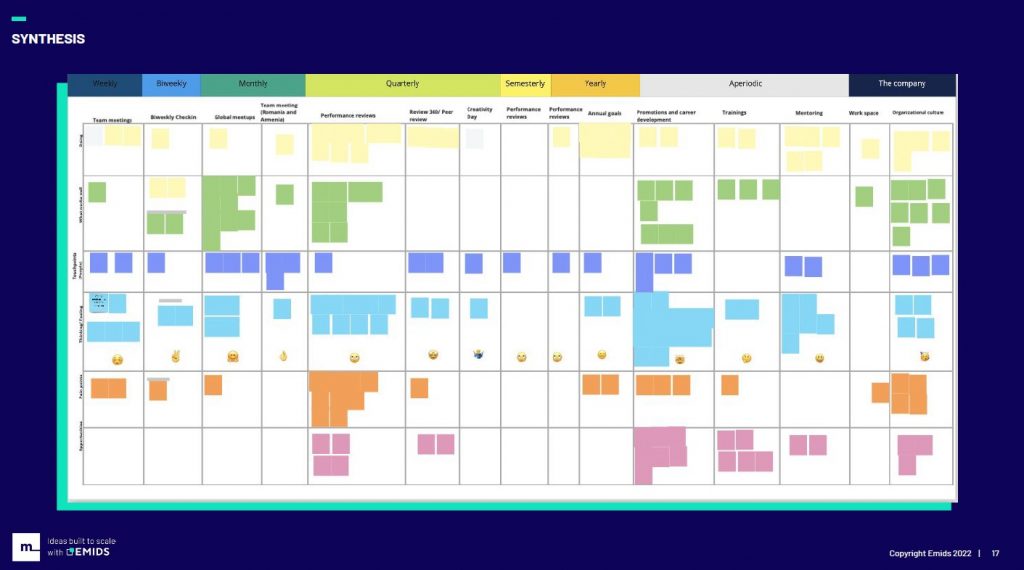
This process is not easy because some journey stages are not always clear. Keep that in mind and stay flexible in your approach to easily add or remove stages at any point during data analysis, if needed.
To validate the journey maps and involve the stakeholders a little bit more in the co-creation process, the UX researchers planned a journey mapping session. This exercise was very important as it allowed SMEs to put themselves into employees’ shoes and get a big picture.
Equally important was to ensure that people saw themselves reflected in the research so that the information and insights presented in the journey maps were easy to consume and understand. And the best way to do that was through storytelling.
Step 5: Building empathy with storytelling
To share an employee narrative and build empathy, the UX researchers have developed a persona, Maya Brown, and truly brought it to life through a story.

Maya’s passion for solving human problems through innovative design approaches led her to pursue a career in UX design. Right after graduation, she started working as a freelance designer to get experience in the field. And for five years, she got to work with clients in different domains, but mainly from the game industry.
Although she has enjoyed working in that space, now she feels she has reached a plateau. What she wants to do is to work in a completely new domain with experts to learn from. So, she starts looking for full-time opportunities and soon a recruiter from Macadamian reaches out to her on LinkedIn. Maya is interested in the position and decides to chat with the recruiter. Overall, she has a wonderful experience learning about Macadamian and she is truly excited about the opportunity.
Fast forward a couple of years, and Maya is now a senior interaction designer. She is pretty comfortable at work and likes her colleagues. Maya feels that she has reached a strong and stable position in her career and is contributing to the team's growth. She has also had some changes in her personal life. Maya now has a child at home and her family has just moved to Calgary.
After moving, she took some time off to get everything in place, but now Maya is settled and ready to go back to work. This big change in her life has made Maya reflect on her career so now she starts to wonder what Macadamian can offer her in terms of her goals. Every quarter Maya has to work on the performance review and reflect on her accomplishments. When she is ready, she discusses her progress with the manager and gets valuable feedback. Even though some goals have not been achieved, she feels she is doing a good job.
Now, Maya has been working at Macadamian for five years and she is a UX Design Lead. She has recently had her performance review with the manager and had the time to reflect on her personal and professional growth at the company. Throughout this time, Maya has led multiple projects and mentored many other designers. She credits her achievements to not only the work she has put in but also to the talented people she has gotten to work with and learn from during her time.
However, Maya has reached a point where she does not feel challenged in her work. It has also become hard to find time for her personal life. Also, working in healthcare is not exciting for her anymore. She feels it is time for her to make a move as well. Maya starts looking for opportunities elsewhere, and once she gets an offer, she decides to reach out to her manager to meet for a one-on-one chat.
Maya communicates her decision to move on to a new opportunity and they decide on a notice period. Then the manager starts informing their colleagues about her decision. And over the course of a month, Maya continues to work on the project and transfers her tasks, documents, and knowledge. And in the last week or so, she goes through the offboarding process.
This story was created as a precursor to the journey maps and it allowed the UX researchers to pull people in without overwhelming them. And to further reduce the cognitive load and make these journeys easier to understand, the researchers made those maps interactive.
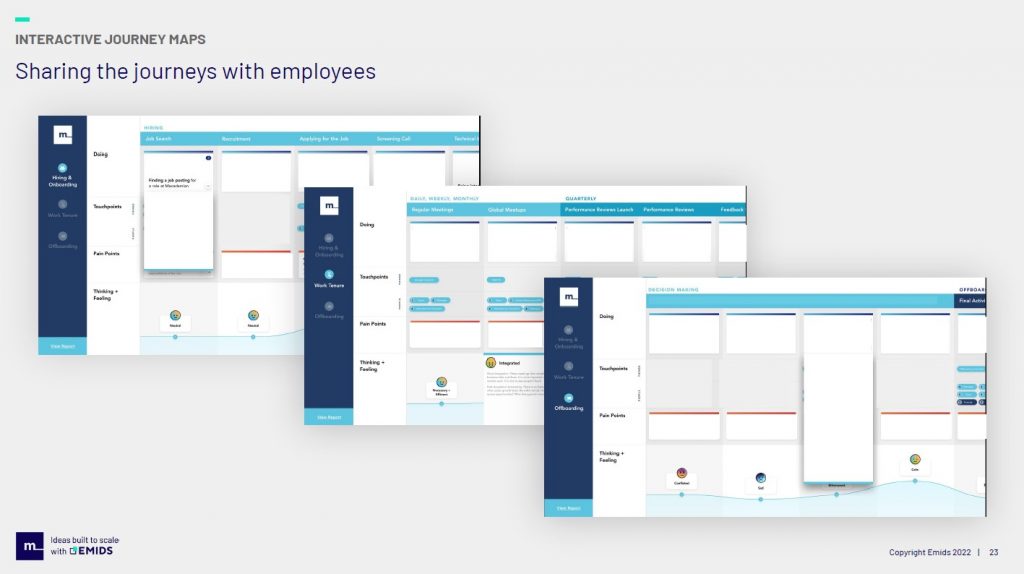
In addition to all the phases depicted on top, journey maps also included different activities, touchpoints, pain points, thoughts, and feelings. The maps had high-level cards that described in general what was happening in that phase, and clicking on them provided more details.
Once the researchers had captured all this information and created the journeys, they shared them with everyone. Besides sharing the methods and findings with the stakeholders, the goal was to identify opportunities and find ways to improve the pain points detected during the research.
To that end, Simran and Yene presented a report containing an introduction, a high-level explanation of the core research methods and processes, and what to do with the information. Some of the positive findings included:
- Good processes in place;
- High employee satisfaction;
- Collaborative work culture.
Once the researchers shared the report with the leadership, they started working on the ideation and co-creation process.
Step 6: Co-creation
Simran and Yene organized a workshop with the stakeholders that included the leads from the UX, Digital Experience, HR, Recruitment departments, and Laboratory. The goal was to get everyone together to collaborate on finding possible solutions and improvement areas. The session was followed by asynchronous activities where the participants were asked to revisit the journeys and brainstorm any ideas regarding those journeys and stages.
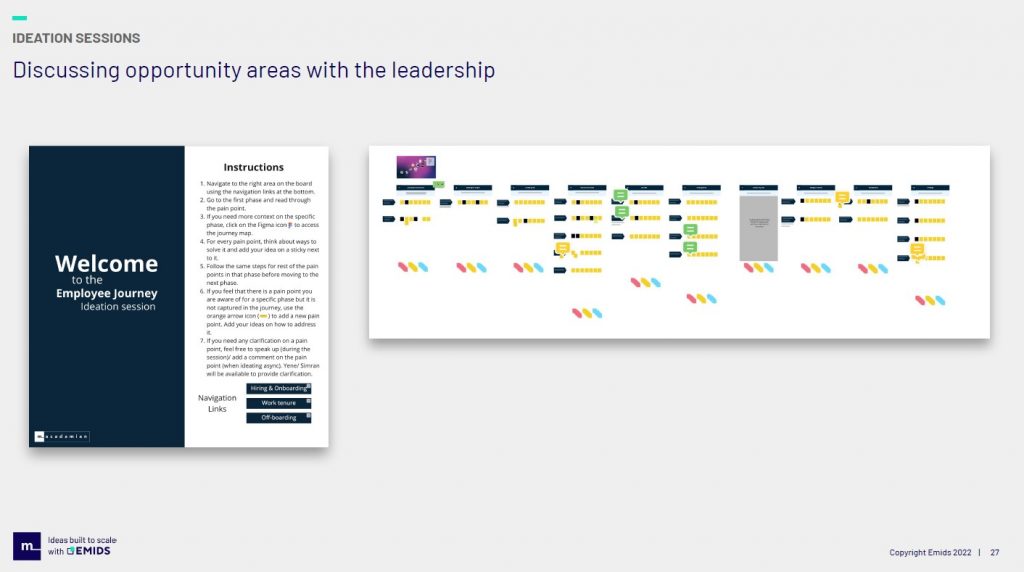
The workshop was dedicated to the onboarding process, and the participants were encouraged to add as many ideas about the pain points as they wanted, regardless of whether they were involved directly or indirectly in the onboarding. And since the people didn’t have any constraints, it helped them to open up and come up with many innovative ideas.
After the session, the stakeholders had two weeks to suggest opportunities for the other two journeys — work tenure and offboarding. This asynchronous approach allowed the leadership to align the project activities with their busy schedules and work on the journey maps when they had time, without feeling the pressure to uncover all the ideas within one session. The researchers also created a Slack channel where people could share their ideas, ask questions, or have a quick chat.
Step 7: Team alignment
After collecting all the ideas from the leadership team, the next step was to put it all together. The researchers identified five key groups responsible for different stages of the employee journey:
- The HR team;
- The recruitment team;
- The management group;
- The IT team;
- The employees themselves.
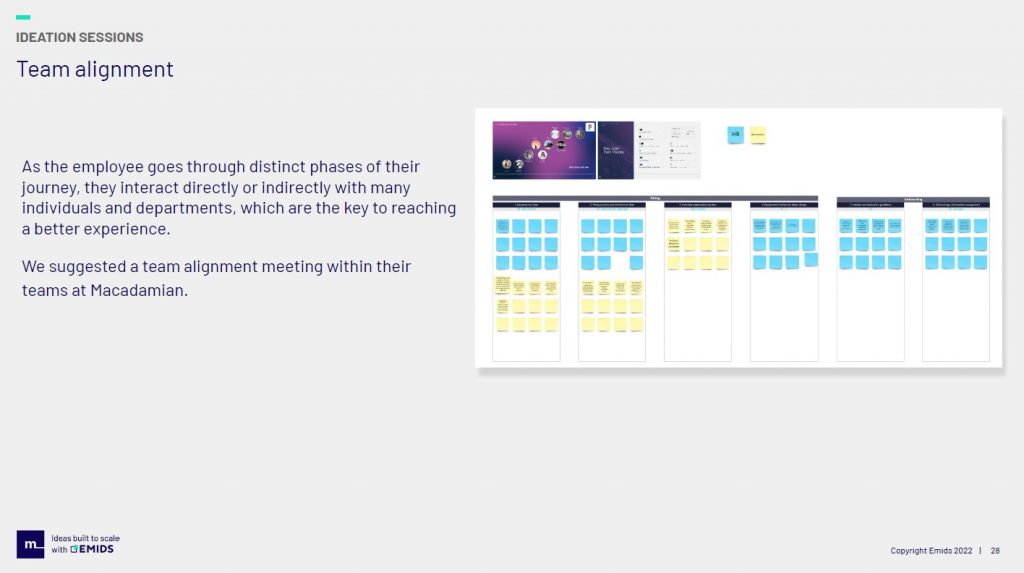
The idea was to start sharing this information with these groups and ensure that they were a part of the process. The researchers started with the leadership and got their buy-in first. Then they moved to the HR and recruitment teams, shared with them the information about the onboarding and recruitment-related processes, and encouraged them to ideate together on finding solutions. Similarly, the researchers organized meetings with the management and IT teams. And as a result of this collaboration, there were a lot of new, exciting ideas on how to remove the pain points.
Finally, when the ideation process was finalized, the UX researchers took their work to a global monthly meeting to share the results with the employees because at the end of the day it was all about the employees. Based on the research findings, the HR team created employee journey 101 and made it a part of the onboarding materials. And lastly, authentic conversation workshops were set up where communication was based on non-violent principles.
The bottom line: Impactful changes
When the UX researchers started sharing the information they discovered, everyone was really excited. But what’s more important, the findings of the research were further translated into the goals of the respective teams that started to work on implementing the improvements to enhance the overall employee experience.
Some of the improvements included incorporating hiring and exit surveys with the employees, introducing onboarding checklists, conducting interviews with employees to gather feedback, and more.
On a final note, it’s important to remember that an employee journey is dynamic and evolves over time, so the employee journey research has to be regularly revisited to reflect the changes and stay up-to-date.
The recording
Do you want to hear the case study from the UX Researchers themselves and listen to the Q&A part? Then watch the event recording below.




